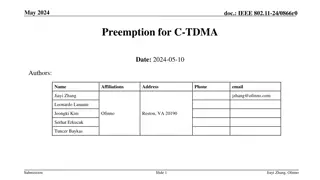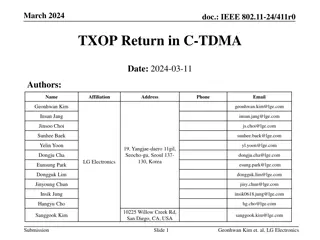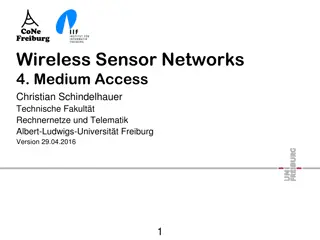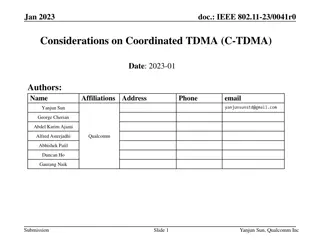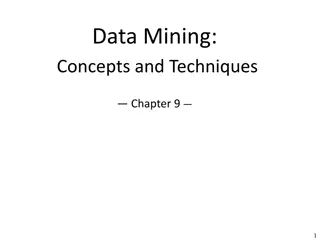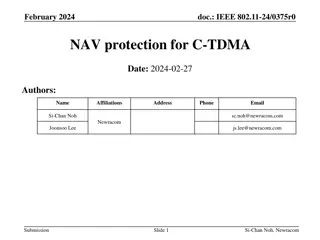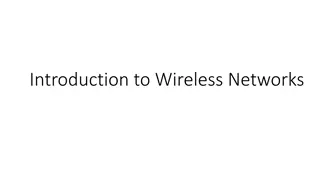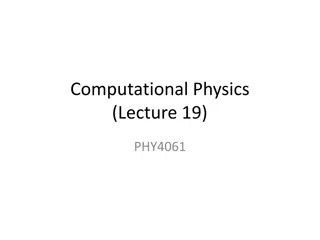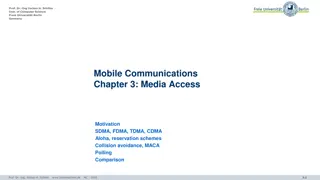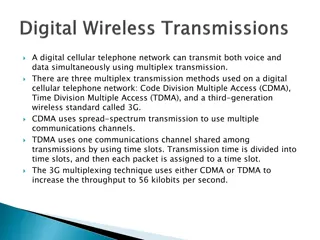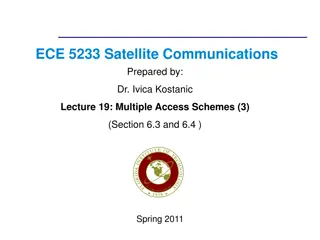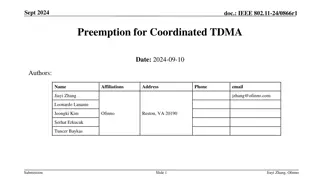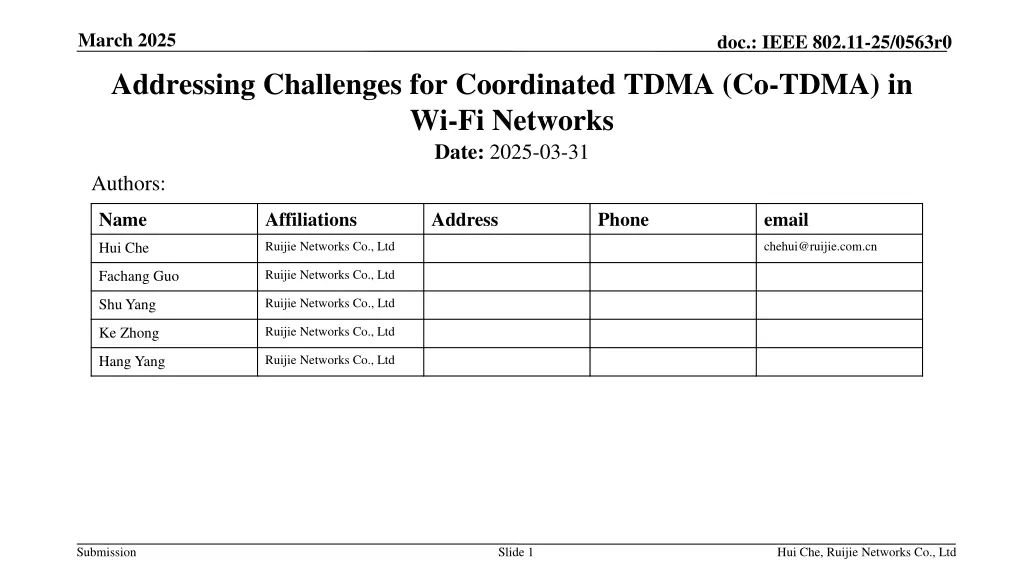
Addressing Challenges for Coordinated TDMA in Wi-Fi Networks - A Proposal for Optimized TXOP Allocation
Explore the challenges in dynamic resource allocation for Coordinated TDMA in Wi-Fi networks as discussed in the document IEEE 802.11-25/0563r0. The proposal introduces an optimized TXOP allocation strategy that includes adaptive TXOP partitioning, efficient signaling mechanisms, dynamic fairness adjustment, and collision mitigation to enhance network efficiency and fairness.
Download Presentation

Please find below an Image/Link to download the presentation.
The content on the website is provided AS IS for your information and personal use only. It may not be sold, licensed, or shared on other websites without obtaining consent from the author. If you encounter any issues during the download, it is possible that the publisher has removed the file from their server.
You are allowed to download the files provided on this website for personal or commercial use, subject to the condition that they are used lawfully. All files are the property of their respective owners.
The content on the website is provided AS IS for your information and personal use only. It may not be sold, licensed, or shared on other websites without obtaining consent from the author.
E N D
Presentation Transcript
March 2025 doc.: IEEE 802.11-25/0563r0 Addressing Challenges for Coordinated TDMA (Co-TDMA) in Wi-Fi Networks Date: 2025-03-31 Authors: Name Affiliations Address Phone email Ruijie Networks Co., Ltd chehui@ruijie.com.cn Hui Che Ruijie Networks Co., Ltd Fachang Guo Ruijie Networks Co., Ltd Shu Yang Ruijie Networks Co., Ltd Ke Zhong Ruijie Networks Co., Ltd Hang Yang Submission Slide 1 Hui Che, Ruijie Networks Co., Ltd
March 2025 doc.: IEEE 802.11-25/0563r0 Abstract Background of Co-TDMA Dynamic Time Allocation Sharing AP splits TXOP into time slots for other APs or P2P STAs (Motion 184). Supports on-demand allocation and return (Motion 160/277). Coordination Signaling Framework Polling via BSRP Trigger (Motion 269) and response via M-BA (Motion 270). MU-RTS TXS Trigger for time allocation (Motion 159). Challenges Resource Allocation Fairness Sharing AP retains minimum TXOP for its traffic (Motion 329). Preventing excessive channel occupation by cooperative APs (Motion 274). Increased Signaling Overhead Polling, allocation, and return phases consume resources. Short TXOP scenarios (e.g., AC_VO) may have lower gains than signaling costs. Submission Slide 2 Hui Che, Ruijie Networks Co., Ltd
March 2025 doc.: IEEE 802.11-25/0563r0 Problem Statement Challenges in Dynamic Resource Allocation of Co-TDMA Causal Path of Dynamic Resource Allocation TXOP Segmentation Dynamic Time Allocation Reduced Idle Time Increased Utilization TXOP Allocation Conflicts Sharing AP's own BSS traffic (e.g., video streaming, large file transfers) dominates TXOP. Insufficient remaining TXOP for polling (ICF/M-BA) and allocation (MU-RTS/CTS). Example overhead in 802.11ax: ICF (BSRP Frame): ~20 s SIFS: 16 s M-BA Response: ~30 s Total Overhead 66 s If TXOP < 100 s, cooperation gain is negative. Submission Slide 3 Hui Che, Ruijie Networks Co., Ltd
March 2025 doc.: IEEE 802.11-25/0563r0 TXOP Allocation Issues Impact of Large TXOP Allocation for Sharing AP Fairness Conflict Large TXOP (e.g., 10ms) may block other APs/STAs for extended periods, violating EDCA fairness. Dynamic Environment Adaptation Fixed large TXOP wastes resources in low-load scenarios, reducing network efficiency. Hidden Node Problem Longer TXOP increases the chance of hidden nodes initiating transmissions, causing collisions. Inefficient Utilization If the cooperative AP has no traffic demand, the channel remains idle. Submission Slide 4 Hui Che, Ruijie Networks Co., Ltd
March 2025 doc.: IEEE 802.11-25/0563r0 Proposed Solution Optimized TXOP Allocation Strategy 1. Adaptive TXOP Partitioning Introduce a flexible TXOP partitioning algorithm based on traffic demand. 2. Efficient Signaling Mechanism Optimize control frame structures to reduce overhead. 3. Dynamic Fairness Adjustment Adjust TXOP allocation dynamically to balance fairness and efficiency. 4. Collision Mitigation Implement NAV-based coordination to prevent hidden node issues. Submission Slide 5 Hui Che, Ruijie Networks Co., Ltd





